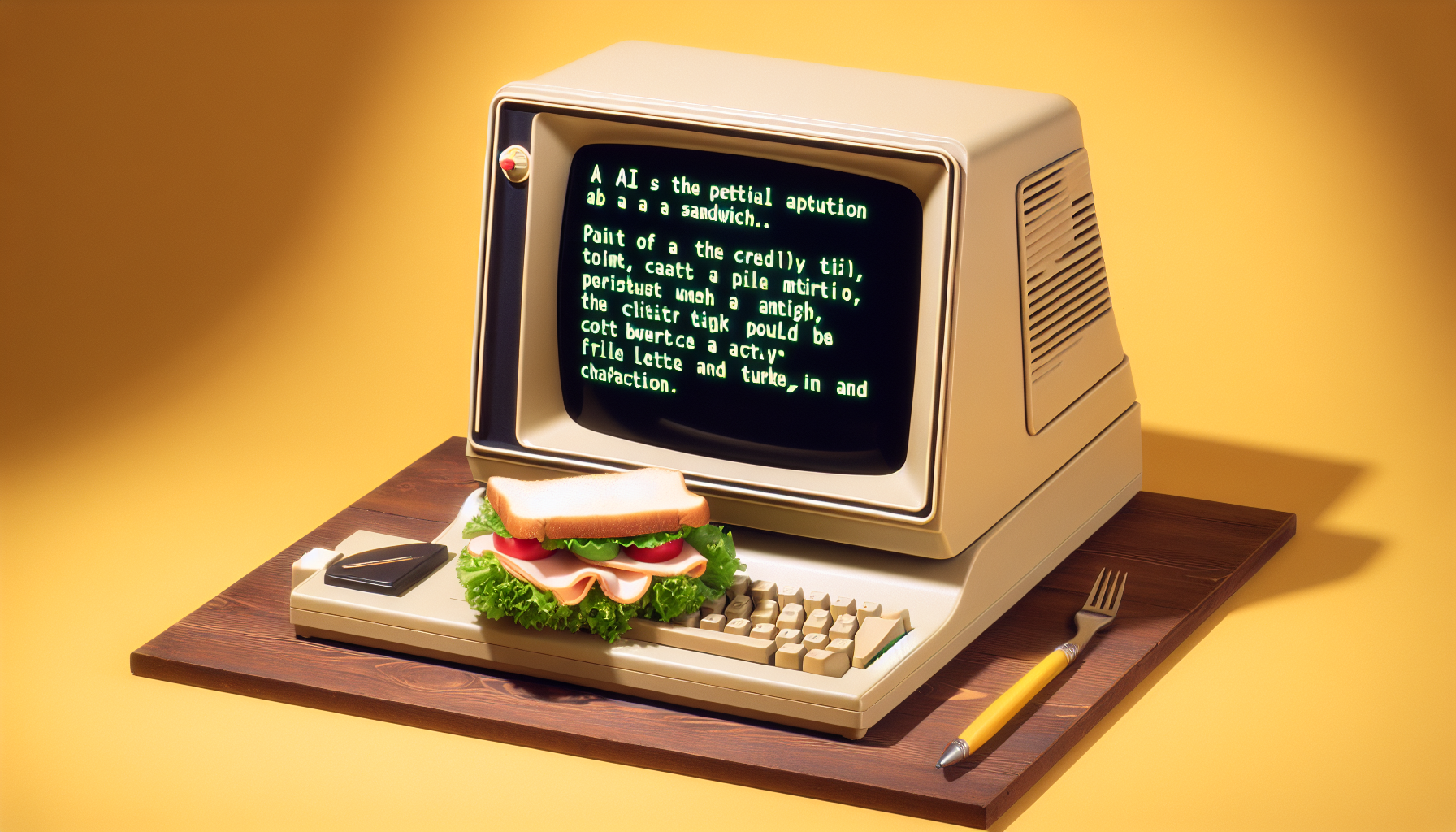When I first asked an artificial intelligence to write me a poem about a sandwich, I expected a mildly dismal result. To my surprise, the machine delivered a poem that was not only grammatically sound, but oddly enchanting. The turkey was “huddled beneath reluctant lettuce,” and the mayonnaise “whispered secrets of the fields.” I laughed, then wondered: Had the AI just created art? Was I the actual creator, or merely a spectator to its generative gymnastics? It’s a question chewing away at more than sandwiches these days—the world seems obsessed with whether machines can truly be creative, and what that means for us fleshy, idea-generating humans.
What Is Creativity, Anyway?
Before we decide whether a machine can be creative, we should probably agree on what creativity is. This, as with all things philosophical, is much easier said than done. At its simplest, creativity seems to involve producing something new and valuable. That newness can mean many things: a combination never seen before, a fresh perspective, or an innovation that shifts how we view the world.
There’s also a human flavor to creativity—an aspect of intention, emotion, and self-expression. For centuries, art has carried our confessions and our longings, allowed us to express what words alone can’t. But criteria grow messy the closer you look. Marcel Duchamp’s infamous “Fountain”—a signed urinal—raised eyebrows a century ago and still asks: does the intention of the creator matter more than the object itself? If so, what does intention mean for a machine whose motives are, at best, engineered?
The Machinery of Making Art
Modern artificial intelligence has certainly upped the ante. Programs like DALL-E, Midjourney, and ChatGPT now generate images, stories, and poems based on prompts that, frankly, sometimes rival human output. A quick dip into AI art communities reveals a deluge of works: castles on Mars, reflective origami birds, or heartbreak rendered in haunting verse.
But here’s the key trick (and trickster): what’s actually happening beneath the surface? AI creates by recognizing patterns in oceans of previous human art, then statistically composing something new based on those patterns. It doesn’t understand in the way we do—it samples, mimics, and remixes. Even my poetic sandwich was the result of digesting thousands of poems and food descriptions.
Origination Versus Inspiration
Humans are inspired by the world; AI is inspired by data. Humans have context drawn from lived experiences—heartbreak, joy, the way sunlight falls on bread. For us, a painting or poem is sometimes the outpouring of a lifetime of memories and hopes.
Machines, in comparison, start life tabula rasa—blank hard drives. Their learning consists entirely in analyzing and mapping the relationships in data. They don’t wonder how mayonnaise feels; they don’t have “bad sandwich days.” What appears original is a recombination of what they’ve seen before. This is impressive, but is it origination in the same sense? Or is it just really clever imitation?
To use a culinary analogy: if you give a chef eggs, flour, and butter, she might invent a soufflé. Give those things to an AI, and it produces recipes based on everything humans have ever cooked with those ingredients—but does it truly invent, or just remix?
But Does the Source Matter?
Here is where things get tricky—and, for humans, maybe slightly uncomfortable. If an AI’s painting moves you, is it less of a work of art because its creator lacks consciousness or suffering? If a poem written by a robot makes you weep, can you say it didn’t “matter”?
History reminds us that art is always collaborative—no human artist invents in a vacuum. Shakespeare borrowed from earlier legends, Picasso from African masks, and jazz musicians riff on centuries of song. We laud ingenious combinations, not pure acts of creation ex nihilo (“out of nothing”).
If criteria for art rest on emotional effect, then AI can pass muster—at least for audiences willing to tolerate the fact that the creator has never felt angst or stubbed its virtual toe.
The Human In the Loop
Perhaps the real answer lies in the relationship between the human and the machine. No AI, for now, dreams up a work without a prompt, dataset, or goal. The human who asks for “a painting of loneliness as a single melting clock” or “a love poem from the perspective of a kitchen sponge” becomes collaborator and instigator.
In this light, AI is not the sole artist, but a tool. Granted, a very surprising and creative tool—one that might teach us to look again at what we thought art was, and even challenge us to up our own creative game. If nothing else, it’s a partner who never gets tired of brainstorming, and never criticizes your sandwich metaphors.
Will Machines Ever Originate True Art?
Let’s not dismiss the possibility out of hand. As AI systems become ever more sophisticated, some theorists speculate that they may one day develop a “theory of mind”—the ability to model others’ mental states. With enough complexity and feedback loops (and maybe a bug or two), could a machine invent a form, a style, or a meaning we’ve never seen before?
It’s a tantalizing prospect. But until that day—if it comes—what separates the artist from the automaton, as the poet Rilke might say, is the capacity to suffer, to long, and to hope. The act of creation is not just generation, but the wild leap into the unknown, the willingness to risk everything for a new vision. For now, at least, that is something only humans can do. But rest assured, the AI may at least help us laugh, weep, and maybe even hunger for more—perhaps even for sandwiches with a side of existential wonder.

Leave a Reply